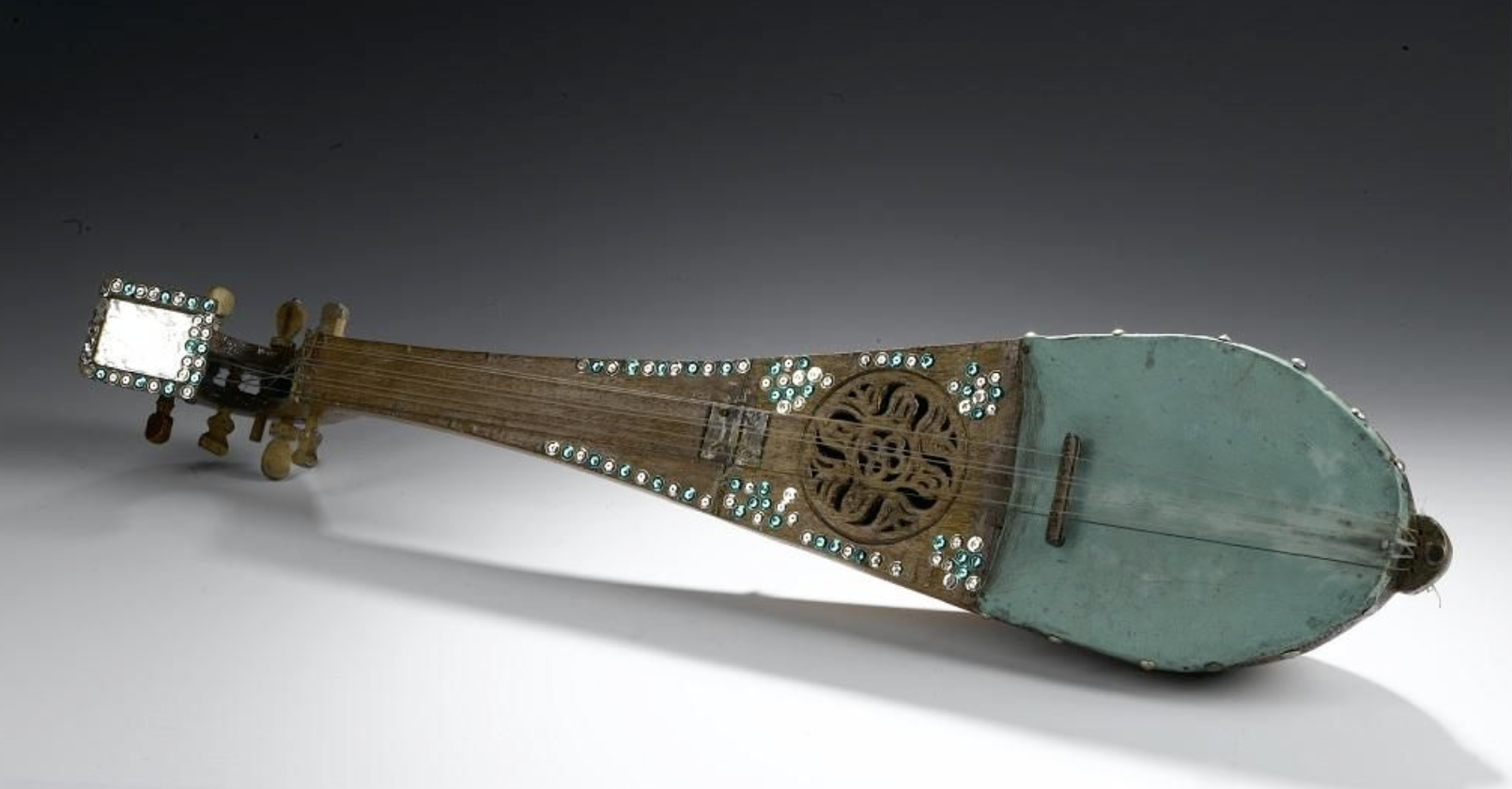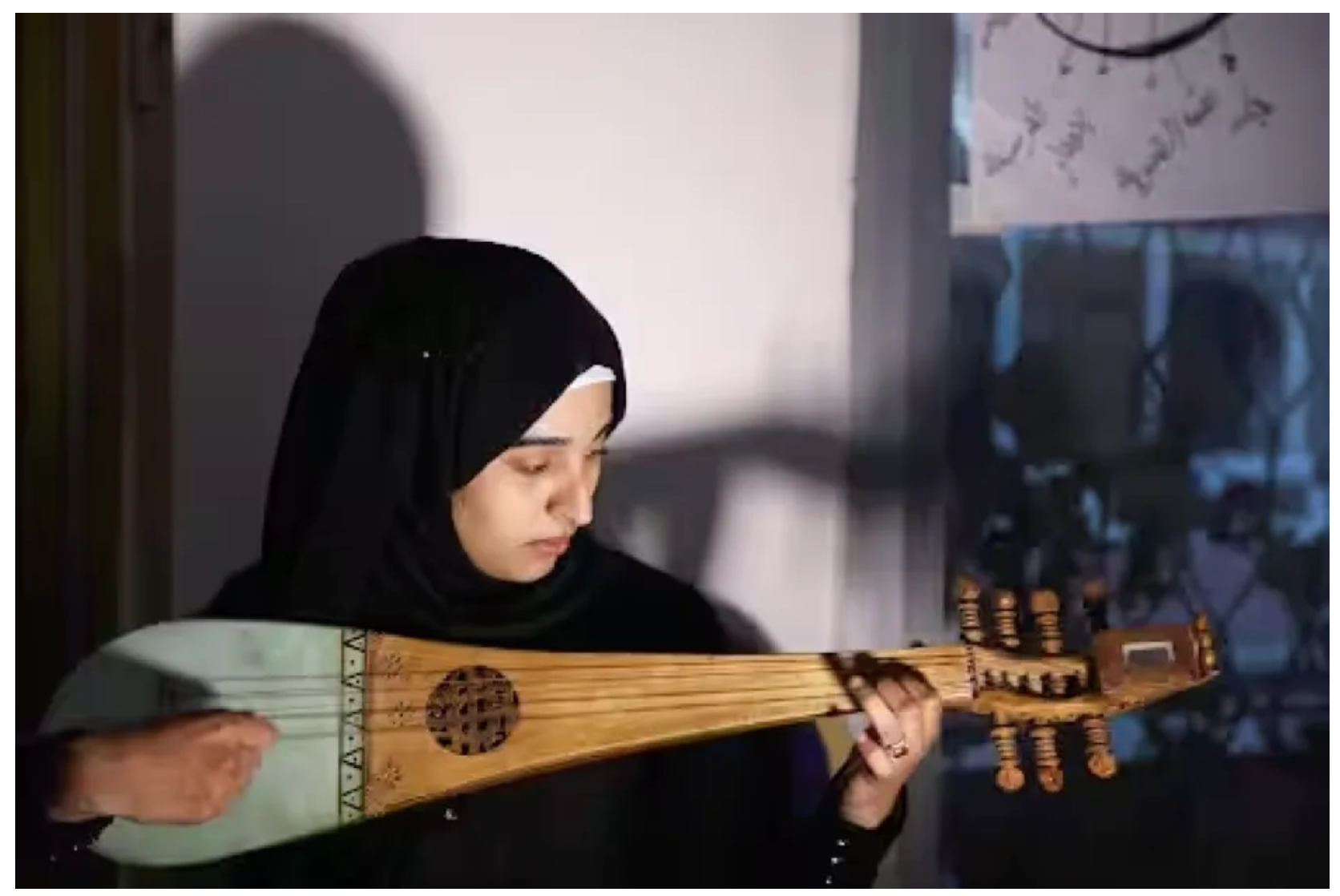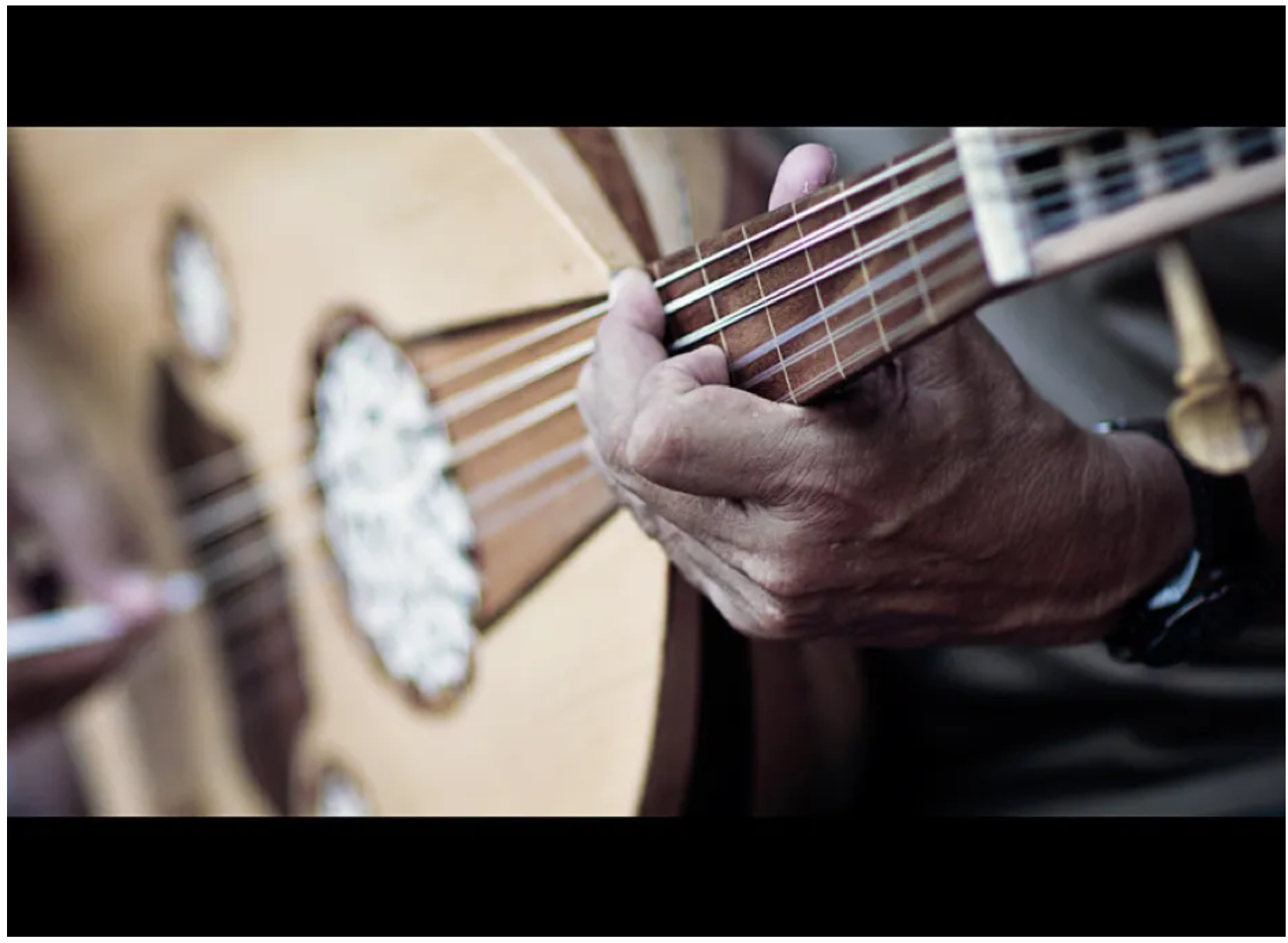Traditional plucked musical instrument of the Arabian Peninsulaqanbūs
A qanbūs (Arabic: قنبوس) is a short-necked lute that originated in Yemen and spread throughout the Arabian peninsula. Sachs considered that it derived its name from the Turkic komuz, but it is more comparable to the oud.

The instrument was related to or a descendant of the barbat, a (possibly) skin-topped lute from Central Asia. The qanbūs has 6 or 7 nylon strings that are plucked with a plectrum to generate sound. Unlike many other lute-family instruments, the gambus has no frets. Its popularity declined in Yemen during the early 20th century reign of Imam Yahya; by the beginning of the 21st century, the oud had replaced the qanbūs as the instrument of choice for Middle-Eastern lutenists.Yemen migration saw the instrument spread to different parts of the Indian Ocean. In Muslim Southeast Asia (especially Indonesia, Malaysia and Brunei), called the gambus, it sparked a whole musical genre of its own. Nowadays it is played in the traditional dance of Zapin and other genres, such as the Malay ghazal and an ensemble known as kumpulan gambus ("gambus group"). In the Comoros it is known as gabusi, and in Zanzibar as gabbus.

The qanbus is a traditional instrument from Yemen carved from a single block of wood. It is also played in Oman, where it is called gabbus. The lower half of the top is covered in skin, and the upper half has a wooden soundboard, often with small soundholes. It has a floating bridge, a sickle-shaped pegbox and usually 7 nylon or gut strings in 4 courses, with the lowest course single. There also exist 3-course versions, with 6 or 5 strings, though these are less common.

The Yemeni lute has 7 strings in four courses, tuned low note to high C DD GG CC. The first C string is a single string; strings D G and C are all pairs.